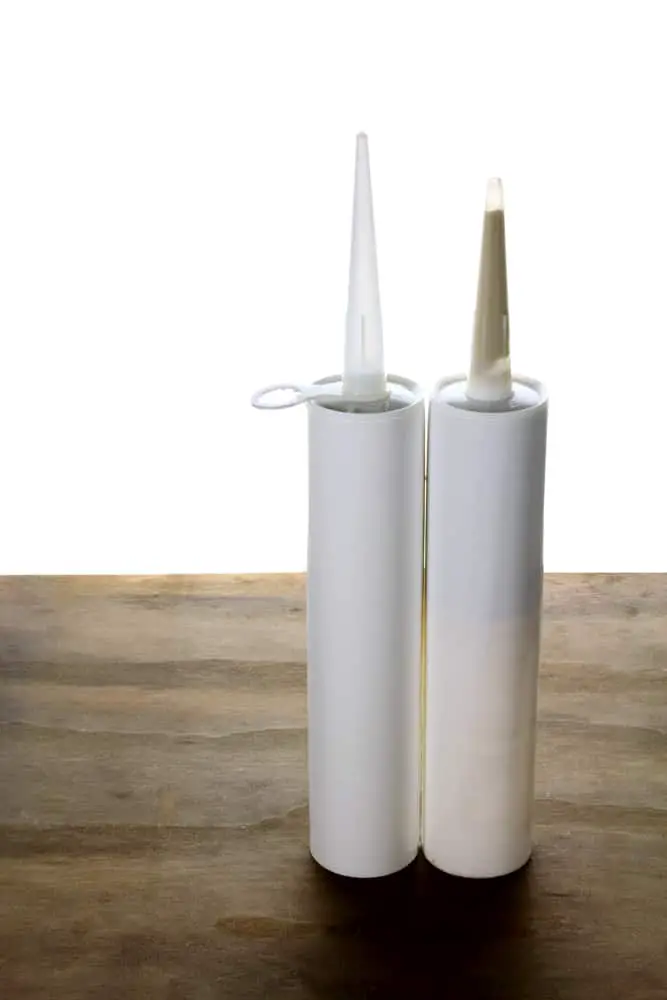If you recently had some of your light switches replaced, the upgrade likely left some damage around the boxes.
This is more evident if you feel cold air coming from around the replaced light switches.
Well, considering that small air leaks can lead to significant energy losses, you might be contemplating how to seal those openings.
In this regard, Do You Caulk Around Light Switches?
Yes, it is imperative to caulk around light switches, especially if they are installed on exterior walls. Sealing the space around light switches (and other outlets) on exterior walls helps prevent drafts and improves the overall airtightness of your home. If your energy bills don’t convince you, think of rodents and insects that can sneak into your home through a space left around a switch box.
Should You Caulk Around Light Switches?
While the space around outlets and switch boxes doesn’t often come first to mind when thinking about caulking, they can lead to serious concerns.
Besides being an eyesore, gaps around light switches are a safety hazard and can lead to enormous energy loss. That’s why you should seal them.
Caulking around light switches helps prevent drafts, which would otherwise lead to energy loss, apparently causing your energy bills to surge.
Since the gaps can leak a lot of cold air into your house, sealing the cracks around switch boxes also makes the interior space more comfortable, especially in cold winter months.
Another reason any homeowner would want to fill in the gaps around light switches is to keep insects and dust from getting in.
You don’t want to allow uninvited visitors to your house or anything that might cause allergic reactions.
Depending on where the switch is located, caulking around the box can help prevent water infiltration, which can be a serious threat if it completes a circuit.
What Should Be Used For Sealing Around Light Switches?
Gaps establish when a light switch or outlet is not flush with the wall or when there is damage to the wall.
Thankfully, there are many ways to fill in around light switches.
Depending on the materials you are sealing and your budget, you can use expanding foam, caulk, or silicone.
You can as well repair the wall to fill the gap. Interestingly, these solutions can be easily modified to fit most situations.
Silicone is a commonly preferred choice for caulking because of its durability, plus it is easy to clean up. Even so, it tends to be pricier than latex caulk, is not UV resistant, and is more difficult to remove.
This can be a concern when replacing or replacing. After all, switches wear out and will need to be replaced over time.
If you are dealing with a bigger gap, foam sealant might be your best option.
Just make sure to pick an expanding foam explicitly designed for sealing around switches. In most cases, the minimally expanding foam works best.
But how do you ensure you get the best product for your project?
Well, first things first.
For caulk to seal around outlets and light switches, go shopping for electrical plate weatherstripping. That way, you can be sure to get exactly what you need for your project.
How To Caulk Around Light Switches And Outlets
No matter what type of filler you are using, caulking around light switches and outlets is a minor and straightforward fix.
In most cases, you should be able to do it straight from the tube. Follow these steps to seal spaces around light switch boxes.
1. Working On Receptacles And Switches Can Be Dangerous
Before anything else, flip the circuit breaker off and use a tester to ensure no current flowing.
2. Prepare Your Work Area
Caulk adheres better to clean surfaces, so you want to ensure the surface you are applying caulk to is clean and dry.
Gently clean around the switch boxes you want to seal using paper towers. You will also need to cover the floor with an old sheet or rug to avoid befouling it.
3. Get Your Sealant Ready
For smaller gaps, less than ¼ inch, you can go with silicone or acrylic latex caulk. Otherwise, foam sealant formulated for use around electrical outlets will be the best bet.
4. Open The Caulk And Test It
With smoothly flowing caulk, point the open caulk nozzle at a corner and gently squeeze the sides to let out the filler as you carefully drag the nozzle. Fill out all gaps around the switch box.
5. Smooth The Caulk Around The Switch
For smaller gaps, you can do the smoothing using your finger.
6. Clean The Light Switch And Surrounding And Leave The Caulk To Cure
After curing, the caulk will create an airtight and water-resistant barrier around the light switch. Repeat the process to seal around all light switches on the exterior walls.
Using Outlet Gaskets To Air-seal Your Home
Outlet gaskets provide an easy way to air-seal your home.
All you need is to install gaskets underneath the cover plate of light switches and outlets on the exterior walls.
However, outlet gaskets do not provide a lasting solution.
While installing gaskets will definitely reduce drafts, they won’t do the job perfectly.
For this reason, if you want to make your home airtight, the best solution is to caulk around switch boxes.
Caulking creates an airtight barrier around the switch box while creating continuity, which maintains the aesthetics of your home.
You can always install an outlet gasket after applying caulk. This can help conceal all visible finish lines.
Conclusion
Filling the gaps around light switches on exterior walls can make your home airtight, which can go a long way to preventing drafts.
If you are contemplating whether to caulk around switch boxes, this post gives insights into how you can go about caulking around outlets.
Sources
https://www.mybuilder.com/questions/v/62644/decorators-caulk

